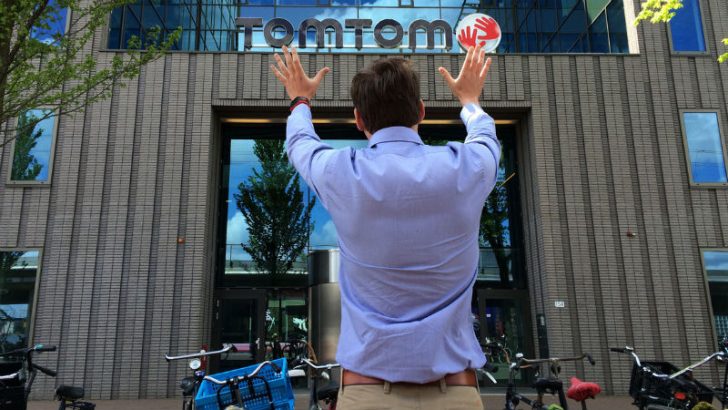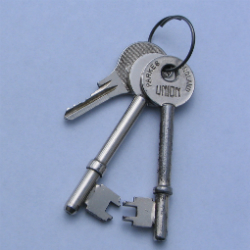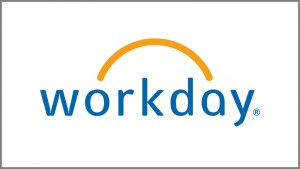
Workday recently announced that TomTom had chosen their HCM solution and was looking to roll it out across its global operations. To find out more we spoke to Arne-Christian van der Tang, senior vice president, Group HR, TomTom about their decision and what they hope to achieve.
TomTom employees #AchieveMore

Founded in 1991 TomTom was one of the first consumer satellite navigation providers. In March 2004 it released the TomTom Go and saw a significant rise in revenues. Problems with its Apple iOS app in 2009 saw the start of a few difficult years for TomTom. However, it has since restructured the business, released a number of new products and re-established itself as the market leader in navigation and mapping products.
As a technology company the key to success is the attraction and retention of staff and van der Tang is conscious that there is a talent war for the best in IT at the moment. To win that war TomTom needed their HRM systems and processes to deliver a great solution for nearly 4800 employees spread across at least 35 countries.
TomTom is a data centric company. Whether it is automotive, consumer or mapping solutions, everything is data driven, except for their internal HRM solution. This was van der Tang’s challenge. The old system was built around a core HR solution that was actually adopted by TomTom following one of its acquisitions. To compound the problem there had been several additional components bolted on over time, some of which had little or no integration with each other or the core system.
According to van der Tang: “We had about 12 different systems added onto our HR system. We needed to find an integrated solution for storing all of our data, but also to start using our data from the analytics side – this was one of our drivers.”
The current HR solution was not fit for the culture of the company as Tang expounded: “From an employee experience point of view or manager experience or candidate experience was not really befitting our brand. Our brand is all about ease and breadth, smart technology in the hands of millions, and everything is except our technology in HR.”
Key Objectives

- Productivity enhancement
A single core system into which all data is collected would remove the necessity for dual keying and reduce the workload on the centralised HR function according to van der Tang. For other companies it would also reduce any error rates incurred during rekeying.
The new system would also need to introduce full self-service for employees so that they could enter data direct onto the system rather than filling in forms cutting down errors and improving overall data quality. It would also mean that with applicant tracking linked to the core solution, selection, recruitment and on-boarding could become a seamless workflow in a single solution.
- Improving understanding of employee absence
While absence management was captured as required by law, the information entered was minimal and it certainly didn’t allow for any centralised analytics to be constructed easily. van der Tang went on to explain: “We now measure absenteeism especially in Western Europe because we need to. We know that our data is not very reliable, because of the administrative burden on managers and employees. Getting that information to us has historically caused a high bounce rate. Technology that is more intuitive and supports mobile will have better user acceptance.”
Van der Tang refers to “high bounce rate” because entering the data is a cumbersome process at the moment. TomTom wanted a solution that is mobile enabled and accessible from anywhere, as well as easy to use. Many of the TomTom staff work from home and their other systems support that culture, as van der Tang explained: “We are really happy when employees are engaged, employees whether they do that from home or offices, given agility and flexibility in the way we work.”
- The war on talent
Listening to van der Tang, TomTom is clearly an employer that seeks and often obtains high calibre candidates. The issue is that amongst the nearly 70,000 applicants there is no easy method to keep in touch with them. He doesn’t want the old phrase: “We’ll keep your CV on file” to mean that its been binned.
Currently their recruitment team try to keep in touch with candidates but it’s done on an ad hoc, often Excel driven basis. He clearly wants a solution that will not only help with the on boarding, selection and recruitment of candidates but also track those who still retain an interest. It will be interesting to see if that extends to alumni.
“I think we are in a unique position, we are a European company in consumer electronics. Brand and talent attraction are two biggest drivers for success. Being able to track talent, and for that the experience needs to be at the highest possible level” said van der Tang.
Why WorkDay

TomTom spent a long time looking for a new solution. According to van der Tang: “We looked to upgrade of our current technology (PeopleSoft), best in class solutions; specifically for applicant tracking and recruiting, mixing and matching solutions and then looked at some of companies with a full integrated solution in the cloud.”
They chose Workday, and as an HR person van der Tang commented that he is: “Very excited to be partnering with Workday.” We asked him the reasons behind this and initially he gave three reasons
“Employee centricity, simplicity of process, and user experience.”
In fact the answer is slightly deeper and as we probed the surface it was clear that Workday met two additional reasons. The first was that it met TomTom’s diverse international and internal HRM requirements. The second was that as a supplier Workday was also a good cultural fit as a partner.
Considering both companies’ cultures similar were similar in what they look for, van der Tang said: “What is out there, looking for the next problem to solve. What is holding the current users back from doing it. You need to analyse and understand, not come with similar or same product but that fixes the problem that current users have.
“The problem we are trying to solve, whether its navigation, or in digital maps or even in making a camera, you need to understand what’s out there and rather than come with a similar ’me too’ product you come up with a solution that addresses or fixes a problem that all Go Pro users (in the case of TomTom’s Bandit action camera ) or other solution users in HCM are dealing with (in the case of Workday).”
Van der Tang rephrased and expanded his original reasons by saying: “Culture and DNA and from a technology point of view, manageability of the back end, a continuous drive to innovate and employee centric solutions.”
Even after staff are on boarded TomTom want to look after their teams and he added: “Once the great talent is inside we need to offer them tools and access to tools that makes their learning, their personal development and career opportunity easily accessible and very transparent and that is one of the reasons we went for a one stop shop. Workday, for the employee everything is around the employee.”
So how will TomTom approach the implementation?
“We are going to go big bang, by the end of year for core HCM, performance management, recruitment, absence management, benefits and self-service in 37/38 different countries.”
The challenge is to map both the corporate culture alongside localised processes both by country and department. One example of this challenge is the TomTom approach to performance management. Performance management is not a single twice yearly review process, nor is it a continuous feedback process. In fact TomTom have at least three basic styles that Workday will look to support. These are due to local culture and based on employee role.
For example in Asia, they are less likely to be 360 degree appraisals, but they are still formulaic annual appraisal types in most cases. In Europe the development teams have “Agile” appraisals, based on the length of their sprints. In HR, van der Tang seems to have introduced employee centric appraisals, where it is the employee who drives the appraisal process when they wish to, rather than management imposing it upon them. Workday will look to build the processes for all of these over the next few months.
We asked where van der Tan would like to see the solutions moving to next. His perfect solution is somewhere in his head apparently but he is clearly happy with what Workday has as a basis: “What I really like about Workday is that their ecosystem is around the employee with their learning opportunities, career opportunities and their holidays. Ideally at some point we would really like to get HR solutions to the level of personalisation with your recommendations for you, the same as Spotify or Netflix search engines. For me Workday is getting quite close in the learning area.”
Insight
The idea of the personalisation of HR solutions is an interesting one and one that might be a step too far for many companies to look to develop. However, the idea is interesting especially the ability to use machine learning to help individuals through their career within a company. Delivering personalised recommendations for individuals on learning and even holidays might sound too much like big brother but there is something bigger in this.
Companies often want to maximise the output from their staff, perhaps to the point of burn out. If managers, projects and employees are delivered suggestions around vacation time to fit both projects and help avoid burnout it would be to the long-term benefit of the company.
Staff members need to retain their motivation, be delivered opportunities at the right time and have their abilities increased as they continue to through their career. Missing out on one of these can lead to disgruntled employees who leave. Perhaps van der Tang is onto something, it will be interesting to see what developments the HRM software community come up with next.
Conclusion
TomTom selected Workday to resolve not just their HRM challenges today but also their future ones. In considering their future applications TomTom has selected a partner that can deliver constantly updating software that they can take advantage off. As a technology business itself TomTom understands the constant need to innovate and deliver a product that evolves into the future. van der Tang may not have chosen the best recruiting or absence management solution but he firmly believes that the end result will deliver the benefit to his business.
As the consumerisation of technology gathers pace it will be interesting to see how both Workday evolves its product and whether they develop personalisation within HRM or look to enhance other aspects. For TomTom as it strives to be lead technology brand based in Europe it will be interesting to see how the changes it intends to make will make a difference.



























[…] Why did TomTom select Workday. While it met the basic requirements of a centralised data stores, flexible deployment it was also a meeting of cultures. […]